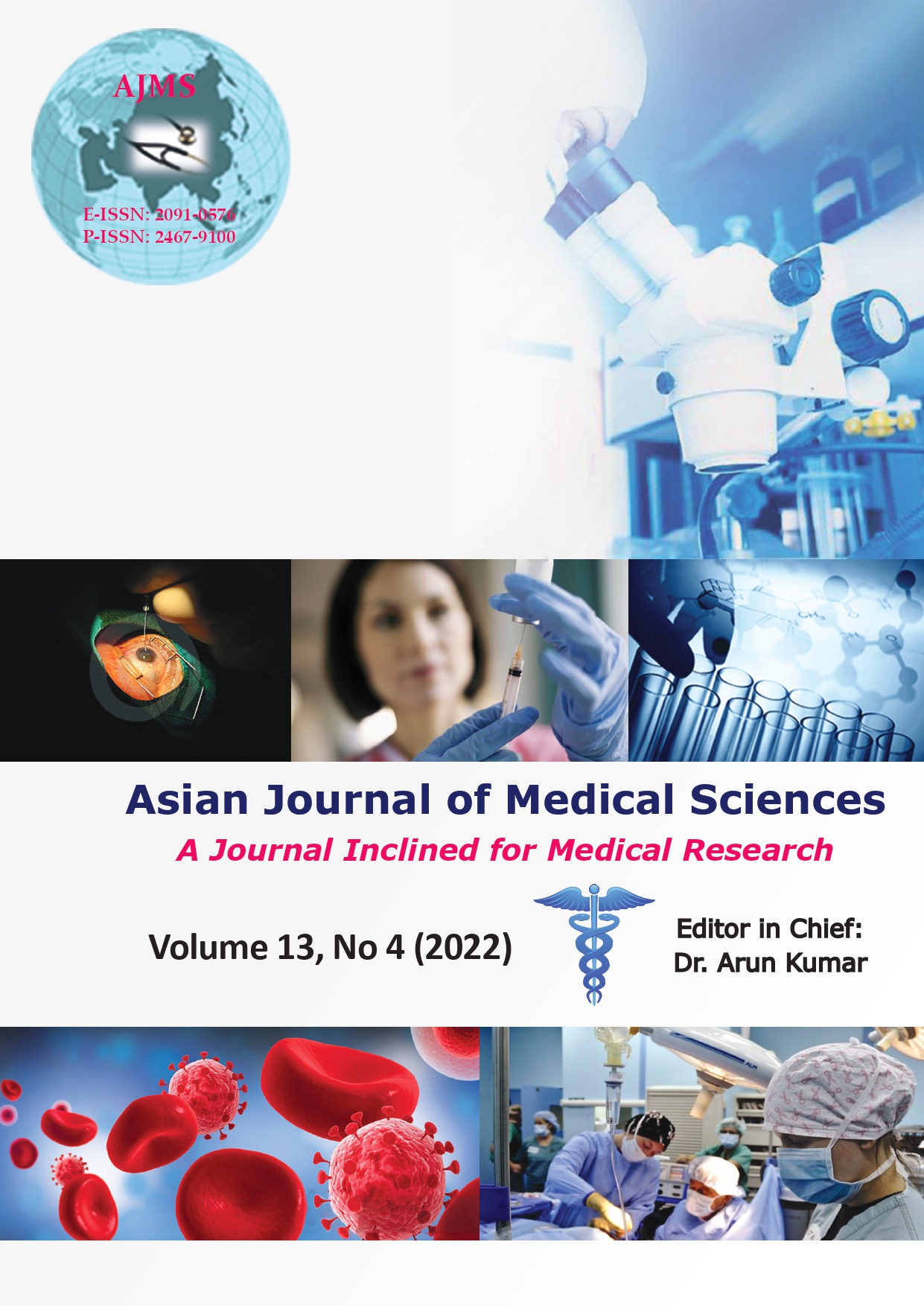Sublay and overlay mesh repair in paraumbilical hernias– which surgery you will prefer??
Keywords:
Lottery method, Mesh, Onlay, Paraumbilical, SublayAbstract
Background: Paraumbilical hernia accounts for 33.9% of anterior abdominal wall hernia. Mesh can be applied onlay; on the anterior fascia, inlay; in the hernia defect, sublay; to retro-rectus or preperitoneal space or underlay; in the intraperitoneal position.
Aims and Objectives: The objectives of the study are as follows:1) To compare the efficacy between sublay and onlay mesh repair for paraumbilical hernia. 2) To compare the safety between sublay and onlay mesh repair for paraumbilical hernia.
Materials and Methods: A prospective study was conducted on 120 patients (60 in each group) patients. The patients were randomly allocated in two groups by lottery method. Patients in Group-A were subjected to sublay mesh repair procedure and patients in Group-B were subjected to onlay mesh repair procedure for paraumbilical hernia repair. Postoperatively, every patient was kept under observations for 3–4 days in ward and observed for complications. Postoperatively, all patients were followed at 10 days, 3 months, and 6thmonth to confirm efficacy and safety of the procedure.
Results: The average age of Group-A was 39 years and 32 years in Group-B. In Group-A, 55% patients were female and 45% patients were male; whereas in Group-B, 60% patients were female and 40% patients were male. More over sublay mesh repair was effective in 82% patients on the bases of recurrence while this procedure was safe in 90% cases on the bases of complications whereas onlay mesh repair was effective in 90% patient’s cases on the bases of recurrence while this procedure was safe in 93% cases on the bases of complications.
Conclusion: Onlay mesh repair technique is more effective, quick, and safe as compared to sublay mesh repair technique for the treatment of paraumbilical hernia.
Downloads
Downloads
Published
How to Cite
Issue
Section
License
Copyright (c) 2022 Asian Journal of Medical Sciences

This work is licensed under a Creative Commons Attribution-NonCommercial 4.0 International License.
Authors who publish with this journal agree to the following terms:
- The journal holds copyright and publishes the work under a Creative Commons CC-BY-NC license that permits use, distribution and reprduction in any medium, provided the original work is properly cited and is not used for commercial purposes. The journal should be recognised as the original publisher of this work.
- Authors are able to enter into separate, additional contractual arrangements for the non-exclusive distribution of the journal's published version of the work (e.g., post it to an institutional repository or publish it in a book), with an acknowledgement of its initial publication in this journal.
- Authors are permitted and encouraged to post their work online (e.g., in institutional repositories or on their website) prior to and during the submission process, as it can lead to productive exchanges, as well as earlier and greater citation of published work (See The Effect of Open Access).




